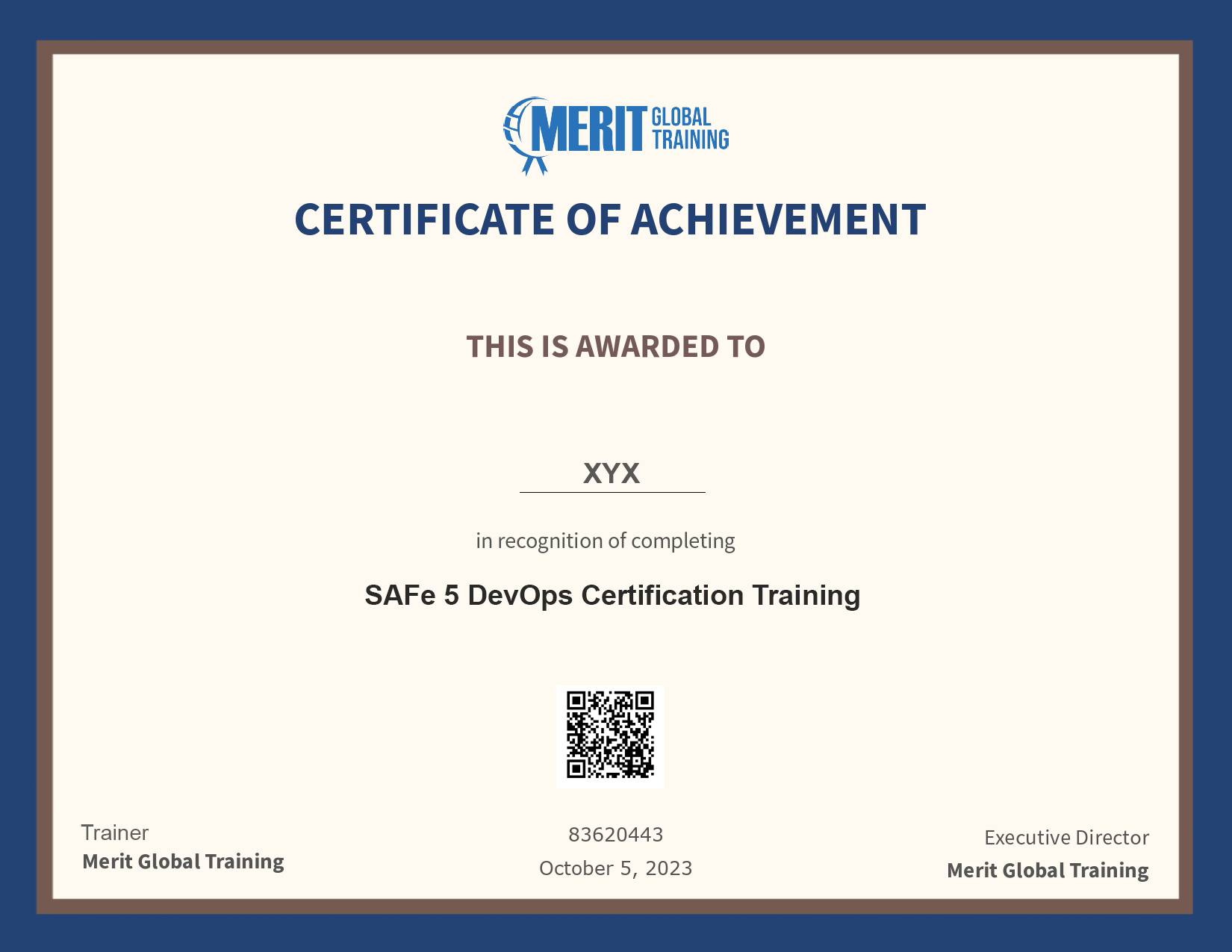Key Insights for Aspiring SAFe Agilists to Boost Team Cooperation
Wiki Article
SAFe Certification: Equipping Leaders in Scaled Agile Frameworks
The landscape of task administration is advancing, and SAFe Certification stands as a crucial aspect for leaders seeking to implement the Scaled Agile Framework effectively. This accreditation equips experts with vital skills to promote collaboration and development within their teams, ultimately improving organizational efficiency. Nevertheless, the trip to coming to be a certified SAFe leader includes even more than simply obtaining knowledge; it incorporates understanding the nuanced roles and obligations within nimble atmospheres. As we check out the complexities of SAFe Qualification, the ramifications for management performance and business success warrant much deeper exam.Understanding SAFe Qualification
SAFe accreditation, which means Scaled Agile Framework accreditation, is a credentialing program designed to outfit experts with the knowledge and abilities required to execute dexterous techniques at range within their organizations. The SAFe framework supplies a structured strategy that assists companies straighten their groups and manage bigger tasks properly, making sure that dexterous techniques are applied continually across different degrees.The qualification incorporates different functions, consisting of SAFe Agilist, SAFe Specialist, and SAFe Program Professional, each concentrating on different elements of the framework. The program stresses the significance of lean concepts, constant distribution, and collaboration amongst teams, fostering a setting for advancement and effectiveness.

Participants go through strenuous training that combines academic expertise with functional application, enhancing their capacity to lead dexterous transformations. The educational program consists of subjects such as agile teams, program implementation, and portfolio monitoring, guaranteeing that licensed specialists are well-versed in all elements of the SAFe technique.
Advantages of SAFe Certification
Obtaining a Risk-free accreditation uses numerous benefits for experts aiming to boost their occupations in agile project monitoring. It gears up people with an extensive understanding of the Scaled Agile Structure, allowing them to effectively execute agile principles throughout big companies. This understanding is vital as businesses increasingly take on dexterous techniques to improve efficiency and versatility.Furthermore, SAFe qualification boosts a prospect's marketability and career leads. SAFe DevOps certification. As companies seek certified experts to lead their active changes, qualified people can command higher salaries and stand apart in an affordable job market. Acquiring this accreditation shows a commitment to continual understanding and professional development, which is very concerned by employers.
Networking chances likewise develop from SAFe accreditation, attaching people with a neighborhood of similar professionals and industry leaders. This can lead to partnership, expertise, and mentorship sharing, additional enhancing one's professional experience.
Finally, accredited professionals are typically much better equipped to cultivate a culture of cooperation and development within their teams, driving successful end results in active tasks. In general, the benefits of SAFe accreditation are manifold, making it a useful financial investment for those in the active job monitoring domain name.
The Certification Process

Prospects are after that urged to take part in a detailed training course, typically carried click here for info out by an accredited SAFe trainer. These programs cover important ideas, principles, and methods of the Scaled Agile Framework, supplying participants with useful understandings and sensible expertise.
Complying with the training, prospects must pass a qualification exam to demonstrate their understanding and competence in using SAFe concepts. The tests are developed to analyze not just expertise but likewise the capability to apply active methods effectively within a scaled setting.
Once licensed, people get accessibility to a wide range of resources, consisting of neighborhood networks and recurring understanding opportunities, which further boost their active leadership capacities. Keeping certification requires constant specialist development, guaranteeing that leaders remain existing with evolving practices within the structure. Inevitably, the accreditation procedure is a strenuous yet fulfilling path for those intending to master active management.
Functions and Duties
Reliable application of the Scaled Agile Structure (SAFe) depends heavily on clearly specified duties and obligations within an organization. These roles are essential for ensuring alignment, effectiveness, and efficient partnership throughout teams.At the team level, essential duties consist of the Scrum Master, Item Proprietor, and Agile Team Members. The Scrum Master assists in the agile procedure, ensuring that the team sticks to the SAFe principles while removing impediments.
At the program level, the Release Train Designer (RTE) plays a crucial duty in managing the Agile Launch Train (ART), ensuring smooth program execution and positioning throughout multiple teams (SAFe For Architects). In addition, the system architect and entrepreneur provide technical advice and critical vision, respectively
Continual Renovation in SAFe
Constant enhancement is a cornerstone of the Scaled Agile Framework (SAFe), driving organizations to improve their processes, products, and general efficiency. By cultivating a society of continual enhancement, SAFe motivates groups to routinely assess their outcomes and operations, determine inefficiencies, and implement techniques for improvement. This repetitive procedure not only increases productivity yet also straightens groups with the organization's critical purposes.Central to this method are the Inspect and Adapt (I&A) workshops, which supply structured opportunities for representation and learning. During these sessions, groups analyze efficiency metrics, go over challenges, and generate actionable insights to direct future versions. Additionally, the usage of Agile Release Trains (ARTs) facilitates cross-functional collaboration, allowing groups to share finest practices and drive cumulative renovation.
In addition, Lean-Agile management plays an essential role in advertising a way of thinking of continual renovation. Leaders are charged with promoting an environment where testing is encouraged, and failures are deemed discovering possibilities. By embedding constant improvement right into web the organizational society, SAFe equips teams to continue to be responsive and dexterous to changing market demands, eventually enhancing their ability to provide worth to Our site clients.
Conclusion
In final thought, SAFe Certification serves as a vital device for leaders aiming to implement nimble practices properly within their organizations. Eventually, SAFe Qualification contributes substantially to organizational success and strength.The landscape of job management is developing, and SAFe Certification stands as a crucial element for leaders seeking to apply the Scaled Agile Structure effectively.Getting a SAFe accreditation supplies many advantages for specialists looking to boost their jobs in agile project administration - SAFe For Architects. The Scrum Master helps with the dexterous process, ensuring that the group adheres to the SAFe principles while eliminating impediments. By embedding continual renovation into the business society, SAFe empowers teams to remain responsive and nimble to altering market needs, ultimately enhancing their capability to supply value to customers
In conclusion, SAFe Qualification serves as a vital tool for leaders intending to carry out active practices successfully within their organizations.
Report this wiki page